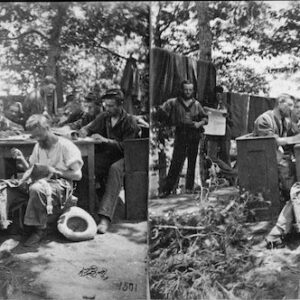Tag: sewing needle
 Wikipedia says: A sewing needle, used for hand-sewing, is a long slender tool with a pointed tip at one end and a hole (or eye) at the other. The earliest needles were made of bone or wood; modern needles are manufactured from high carbon steel wire and are nickel- or 18K gold-plated for corrosion resistance. Traditionally, needles have been kept in needle books or needlecases which have become objects of adornment. Sewing needles may also be kept in an étui, a small box that held needles and other items such as scissors, pencils and tweezers.
Wikipedia says: A sewing needle, used for hand-sewing, is a long slender tool with a pointed tip at one end and a hole (or eye) at the other. The earliest needles were made of bone or wood; modern needles are manufactured from high carbon steel wire and are nickel- or 18K gold-plated for corrosion resistance. Traditionally, needles have been kept in needle books or needlecases which have become objects of adornment. Sewing needles may also be kept in an étui, a small box that held needles and other items such as scissors, pencils and tweezers.
Prehistoric sewing needles
The first form of sewing was probably tying together animal skins using thorns and sharpened rocks as needles, with animal sinew or plant material as thread. The early limitation was the ability to produce a small enough hole in a needle matrix, such as a bone sliver, not to damage the material. Traces of this survive in the use of awls to make eyelet holes in fabric by separating rather than cutting the threads. A point that might be from a bone needle dates to 61,000 years ago and was discovered in Sibudu Cave, South Africa. A needle made from bird bone and attributed to archaic humans, the Denisovans, estimated to be around 50,000 years-old, and was found in Denisova Cave. A bone needle, dated to the Aurignacian age (47,000 to 41,000 years ago), was discovered in Potok Cave (Slovene: Potočka zijalka) in the Eastern Karavanke, Slovenia. Bone and ivory needles found in the Xiaogushan prehistoric site in Liaoning province date between 30,000 and 23,000 years old. Ivory needles were also found dated to 30,000 years ago at the Kostenki site in Russia. 8,600-year-old Neolithic needle bones were discovered at Ekşi Höyük, western Anatolia, in present-day Denizli Province. Flinders Petrie found copper sewing needles at Naqada, Egypt, ranging from 4400 BC to 3000 BC. Iron sewing needles were found at the Oppidum of Manching, dating to the third century BC.
Ancient sewing needles
A form of needle lace named nålebinding seems to generally predate knitting and crochet by thousands of years, partly because it can use far shorter rough-graded threads than knitting does.
Native Americans were known to use sewing needles from natural sources. One such source, the agave plant, provided both the needle and the “thread.” The agave leaf would be soaked for an extended period of time, leaving a pulp, long, stringy fibres and a sharp tip connecting the ends of the fibres. The “needle” is essentially what was the tip end of the leaf. Once the fibres dried, the fibres and “needle” could then be used to sew items together.
Sewing needles are an application of wire-making technology, which started to appear in the second millennium B.C. Some fine examples of Bronze Age gold torques are made of very consistent gold wire, which is more malleable than bronze. However, copper and bronze needles do not need to be as long: the eye can be made by turning the wire back on itself and redrawing it through the die.
Later sewing needles
The next major break-through in needle-making was the arrival of high-quality steel-making technology from China in the tenth century, principally in Spain in the form of the Catalan furnace, which soon extended to produce reasonably high quality steel in significant volumes. This technology later extended to Germany and France, although not significantly in England. England began creating needles in 1639 at Redditch, creating the drawn-wire technique still in common use today. About 1655, needle manufacturers were sufficiently independent to establish a Guild of Needlemakers in London, although Redditch remained the principal place of manufacture. In Japan, Hari-Kuyo, the Festival of Broken Needles, dates back to the 1600s.
Showing the single result
